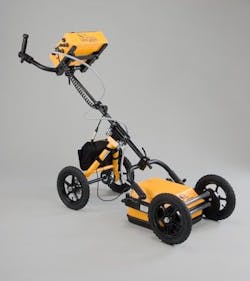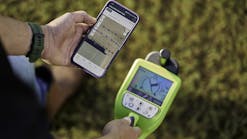Seeker Cuts Underground Mapping Time by 70 Percent
When Hanover Engineering began work on a 20-mile long sewer project estimated at $18 million, they knew it wouldn’t be easy, specifically analyzing the subsurface rock on the trench lines. Traditionally, this task would require boring test holes approximately every 30 feet: a tedious and time-intensive approach, but one that’s still regularly used.
If the project’s team had stuck with the typical method, that would have translated into boring more than 3,500 holes for analysis.
When a project grant restricted the timeline for the East Coast firm that provides consulting, civil engineering and support surveying services, they searched for a faster, more modern method of tackling the work.
“I felt we needed to find some type of system, some type of equipment, that could survey so we could try to analyze the amount of rock on these trench lines,” said Matthew Epler, EIT with Hanover’s Ephrata, Pa., office.
The firm’s research turned up US Radar. Specifically, Hanover Engineering tested and purchased the wheel-mounted Seeker SPR (sub-surface penetrating radar) with a 500-megahertz antenna. It turned the project into a walk in the trench-lined park as crews simply pushed the Seeker over the surface of the trench area and relied on it’s sub-surface penetrating radar system to do the work for them and then display the results on the touch screen panel.
“We have survey data on 20 miles of pipe,” Epler said. “I have all these scans and all these pictures (from the Seeker SPR).”
He estimates the Seeker SPR cut the time needed to survey the area by 70 percent. Plus, it diminished any environmental impact concerns that might accompany a project typically requiring thousands of bore holes. Now, they’ll just do a few bore holes to confirm the data the Seeker provided.
“We’ll take this data we received from the US Radar equipment, and we can take it to be very selective on the boring,” Epler said.
The Seeker is technologically advanced and yet simple to operate and easy to maneuver. It transmits energy pulses through various types of surfaces, including clay, soil, concrete and brick. Whether the depth range being explored is known or not, the Seeker produces images of what’s below and can tailor the picture based on a user’s set parameters, such as soil settings, algorithms and color palette. Everything is displayed immediately on a large, bright screen that’s easily visible even in daylight.
“It’s like looking at an x-ray,” Epler said. “The more you look, the more you see.”
The 500-megahertz antenna that Hanover chose is among the most popular of the frequency options US Radar offers. The full range extends from 100- to 2,000-megahertz. At 100 megahertz, the Seeker SPR works best for detecting sizable objects, such as bedrock and large pipes, at depths of up to 100 feet. On the opposite end, the 2,000-megahertz antenna provides high-resolution details at depths to 18 inches, displaying everything from fine wire to cracks in concrete. The 500-megahertz antenna provides good versatility, with up to 14 feet of detection for pipes, cables and soil disturbances.
Beyond the sewer pipe project, Hanover anticipates its Seeker SPR will be beneficial in other engineering applications, from finding sinkholes to locating storm pipes for clients. It has already been used to locate water lines and water services, and to explore tight spaces to avoid conflicts between existing utilities and proposed new utilities. Hanover also is interested in exploring GPS options with the Seeker, which can be attached to an external GPS device for additional data collection.
“(The GPS option is) one we’re very interested in and one we’d get a good amount of use from,” Epler said. “It can tell us exactly where we’re at, where the scans start and stop. This would be a time-saving feature and just help make the process more precise.”
More than 50,000 lineal feet of data can be collected and stored in the Seeker before being transferred via USB port to a Windows-based operating system that processes and filters the information. Additional software allows for even greater processing capabilities, although the basic acquisition software that comes with the equipment handles many needs.
While “computer data syncing” and “rugged” don’t typically go hand-in-hand, that’s not the case with the Seeker SPR. All of the machine’s cables and connections have been constructed with tough military-specification, waterproof connectors. Two sturdy wheels scientifically balance the equipment for stability, which also minimizes the pushing effort and, in conjunction, operator fatigue. Additionally, an optional rough terrain attachment with two additional tires makes the machine ready to traverse almost any surface condition.
In the end, the Seeker provides an accurate, real-time picture of what lies beneath—whether it be wires, bedrock or large pipes—all without disturbing the surface or consuming valuable time as with more tedious methods. Plus, it does so silently by operating off of a battery that provides four to six hours of continuous run time.
“I would honestly go as far as saying this equipment is a survey tool,” Epler said. “Obviously it’s not the answer to everything, as no one piece of equipment is, but it’s a very good survey tool to have in the toolbox.”
--IronClad Marketing, for US Radar


